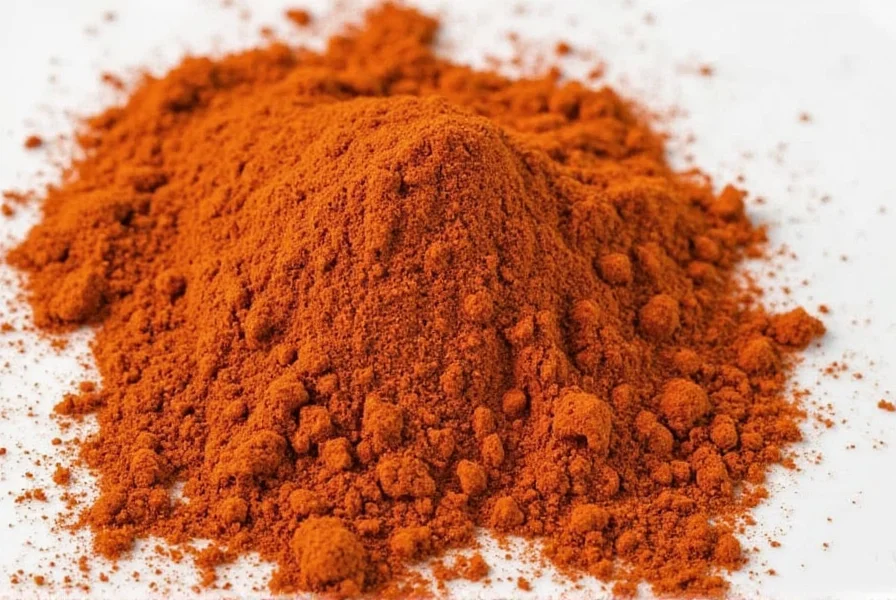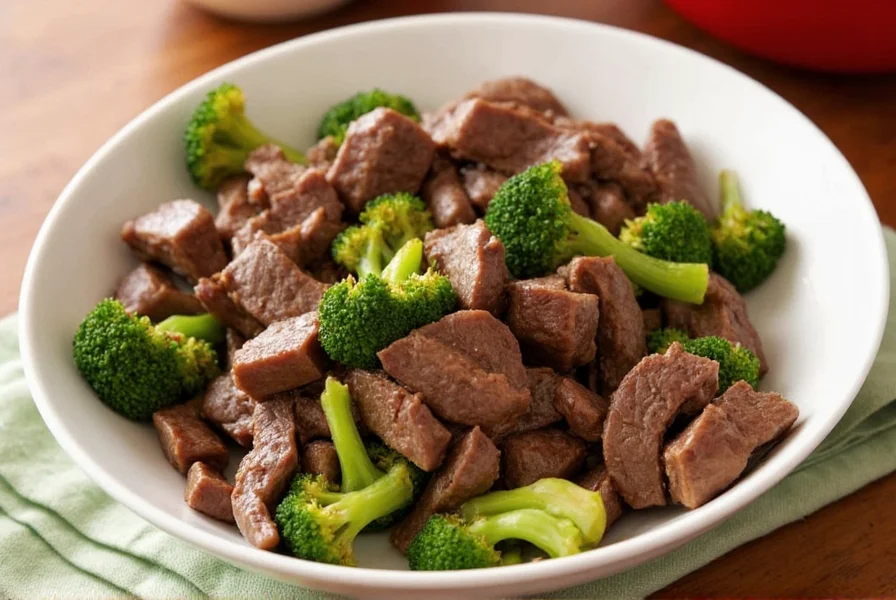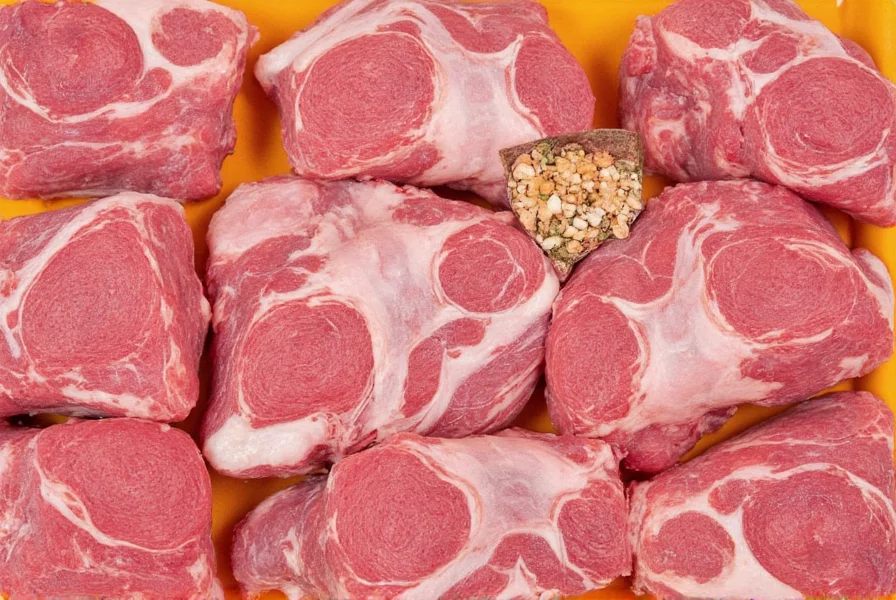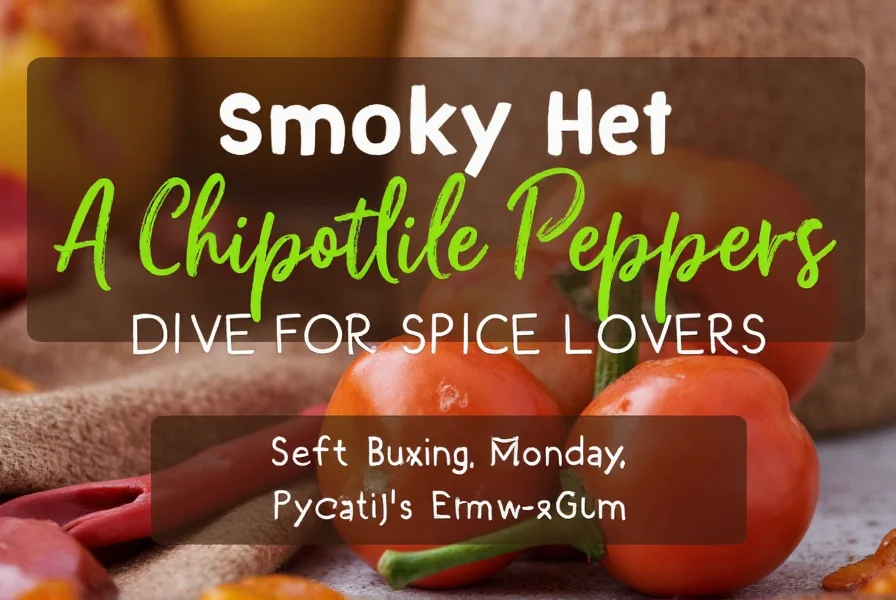Table of Contents
Introduction to Chipotle Peppers
Chipotle peppers are smoked and dried jalapeño peppers, known for their distinctive smoky flavor and medium heat. Originating in Mexico where smoking was used for preservation, they transform fresh jalapeños into a versatile ingredient with complex sweet, spicy, and tangy notes. This guide covers everything from their culinary uses to buying tips and common mistakes to avoid.

The Flavor Profile of Chipotle Peppers
Chipotle peppers deliver a multi-dimensional taste experience:
- Smokiness: From the slow smoking process, creating a campfire-like depth
- Spiciness: 2,500-8,000 Scoville Heat Units (medium heat range)
- Sweetness: Caramelized natural sugars from drying process
- Tanginess: Especially in canned versions with adobo sauce
| Characteristic | Details |
|---|---|
| Heat Level | Medium (2,500-8,000 SHU) |
| Flavor Base | Smoked jalapeño with caramelized sweetness |
| Texture | Dried: leathery; Rehydrated: tender |
| Color | Deep reddish-brown |
This combination makes chipotles ideal for balancing richness in dishes while adding complexity beyond simple heat.
Cooking Tips with Chipotle Peppers
Maximize flavor while avoiding common pitfalls with these expert techniques:
- Rehydration Method: Soak dried chipotles in hot water for 20-30 minutes (not hours) to prevent mushiness
- Adobo Sauce Usage: Always include the sauce from canned chipotles - it's packed with garlic, vinegar, and spices
- Heat Control: Remove seeds and membranes before using for milder heat; use gloves when handling fresh
- Pairing Strategy: Balance with creamy ingredients (avocado, sour cream) or acidic elements (lime, vinegar)
- Smoke Enhancement: Add a pinch of smoked salt to dishes when using fresh jalapeños for chipotle-like flavor

A Detailed Buying Guide for Chipotle Peppers
| Product Type | Best For | Storage | Price Range | Flavor Intensity |
|---|---|---|---|---|
| Dried Whole Chipotles | Authentic smokiness control | Airtight container, 1 year | $$ | High (adjustable) |
| Canned in Adobo Sauce | Quick flavor boost | Refrigerated 3 weeks | $ | Medium (consistent) |
| Chipotle Powder | Even seasoning distribution | Dark cabinet, 6 months | $ | Medium-High |
Always check for: 1) No added sugars in canned versions 2) Organic certification for dried peppers 3) Clear "smoked" labeling (not just "spicy")
Common Mistakes When Using Chipotle Peppers
- Overpowering Dishes: Start with 1/4 tsp powder or 1 pepper per serving; taste before adding more
- Ignoring Heat Variability: Batch-to-batch heat differs - always test a small piece first
- Discarding Adobo Sauce: The sauce contains 70% of the flavor - use it in dressings, marinades, or soups
- Incorrect Rehydration: Boiling water destroys flavor; use hot (not boiling) water for 20-30 minutes
- Wrong Pairings: Avoid pairing with overly salty or bland ingredients; balance with fat or acidity

Frequently Asked Questions About Chipotle Peppers
What exactly are chipotle peppers?
Chipotle peppers are smoked and dried jalapeños. The smoking process (traditionally over mesquite wood) transforms fresh green jalapeños into reddish-brown peppers with deep smoky notes. They originated in Mexico as a preservation method before refrigeration.
How hot are chipotle peppers on the Scoville scale?
Chipotles range from 2,500-8,000 Scoville Heat Units (SHU), placing them in the medium heat category. This is milder than habaneros (100,000-350,000 SHU) but spicier than poblano peppers (1,000-1,500 SHU). The smoking process concentrates capsaicin, making them feel hotter than fresh jalapeños despite coming from the same pepper.
What's the difference between chipotle peppers and jalapeños?
Fresh jalapeños are crisp, grassy, and green. Chipotles are fully ripened red jalapeños that undergo smoking and drying, developing deep reddish-brown color, leathery texture, and complex smoky-sweet flavor. The smoking process fundamentally changes their chemical composition and flavor profile.
How should I store chipotle peppers to keep them fresh?
Dried: Airtight container in cool/dark place (1 year). Canned: Transfer to glass container, refrigerate (3 weeks). Freezer: Freeze rehydrated peppers in oil/adobo sauce in ice cube trays (6 months). Always use clean utensils to prevent contamination.
What are good substitutes for chipotle peppers if I can't find them?
For smokiness + heat: 1 tsp smoked paprika + 1/4 tsp cayenne. For canned adobo flavor: 1 tbsp tomato paste + 1/2 tsp liquid smoke + 1/4 tsp vinegar. For fresh substitution: Roasted poblano peppers with a pinch of smoked salt.
Are chipotle peppers healthy?
Yes. They contain capsaicin which may boost metabolism and reduce inflammation. Rich in vitamins A and C, plus antioxidants. The smoking process preserves most nutrients. However, moderation is key for those with acid reflux or digestive sensitivities.
How do I use canned chipotle peppers in adobo sauce?
Chop and mix into mayonnaise for spicy aioli, blend into tomato-based sauces for depth, or puree with sour cream for dip. Use the sauce as a marinade base for chicken or pork. Freeze leftovers in ice cube trays for easy portioning. Never discard the adobo sauce - it contains essential flavor compounds.
Conclusion
Chipotle peppers transform ordinary dishes with their signature smoky complexity. Whether you're making authentic Mexican mole or modern fusion cuisine, understanding their flavor profile, proper storage, and strategic usage unlocks endless culinary possibilities. Start with small amounts, balance with complementary ingredients, and always keep a jar of adobo sauce on hand for instant depth.












 浙公网安备
33010002000092号
浙公网安备
33010002000092号 浙B2-20120091-4
浙B2-20120091-4